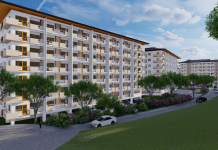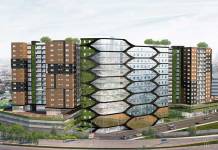The COVID-19 pandemic hit the Philippines hard, putting an end to years of strong economic growth. The country’s GDP fell by 10 percent with the local economy contracting by 8.5 to 9.5 percent. There is hope for a recovery in 2021. The Development Budget Coordination Committee is predicting GDP growth of 6.5 to 7.5 percent next year as the country puts COVID-19 behind it.
For the Philippine property market, there is hope of a recovery. After years of soaring prices, strong demand and great performances, experts believe this could be a much-needed correction for the real estate sector. That being said, a number of questions loom.
Uncertainty surrounds the Philippine property market in 2021 although the sentiment isn’t negative. Here are three questions that will need to be addressed.
Key questions facing the Philippine property market in 2021
1) Can the market reestablish its momentum?
After years of strong demand, rising prices and never-ending activity, the Philippine property market momentum finally came to an end. Bangko Sentral ng Pilipinas (BSP) reported that home prices fell in the country by 14.1 percent in the third quarter of last year and were down 0.4 percent year-on-year.
Of course, that doesn’t tell the entire story. Firstly, Philippine home prices increased by 27.1 percent during the second quarter of 2020, a record breaking performance that stunned many analysts. Secondly, condominium prices were noticeably down in the third quarter, but townhome and detached/attached housing prices both rose.
Property sales fell across the board and that is likely to be the case early in 2021. Yet, some developers are optimistic that the right projects, namely ones designed with the “New Normal” in mind, will still attract buyers. Additionally, there is hope a swift economic recovery would see the property sector quickly return to pre-COVID-19 levels.
2) What will the legacy of COVID-19 be?

Work from home and the “New Normal” aren’t going anywhere. Ultimately, the legacy of COVID-19 will be felt across the residential, office and retail real estate sectors. The transformation has already begun in some cases.
For example, some of the country’s largest retail developers, including SMDC and Ayala Land, have repurposed mall space into storage and e-commerce facilities. Meanwhile, several companies are moving away from traditional office towers in central areas to townships in suburban locations where employees can enjoy greater convenience in a healthy environment.
Consumer preferences have already begun to shift in the residential sector, and these will continue into 2021. Developer I-Land has focused entirely on sustainable living, launching projects featuring a wide range of wellbeing amenities.
Living within integrated communities that mix residential areas with office, retail and recreational components are also expected to grow in popularity over the next 12 months.
“The ideal cities in the future will need to offer opportunities for innovations that enhance the quality of living (right balance of sustainable and cosmopolitan lifestyle); working (uncongested spaces and presence of job opportunities); playing (availability of recreational and cultural centers), and learning (talent enhancement and R&D centers),” Claro dG. Cordero, Jr., Cushman & Wakefield Director and Head of Research, told BusinessWorld.
3) Which way are OFW remittances going?
Overseas Filipino worker (OFW) remittances are key to the Philippine property market and economy in general. It is estimated that 370,000 OFWs returned home in 2020 with another 80,000 expected to come back during the first half of this year. In the short term, remittances picked up towards the end of 2020 and the House of Representatives passed a measure providing discounts on remittance fees for OFWs sending money to their families.
Looking long term, a successful global rollout of the COVID-19 vaccine and the loosening of travel restrictions during the year may allow OFWs to return to their jobs. This would see remittances increasing once again with the Philippine property market likely to benefit in some form.
However, flat or declining remittances would be bad news since for the Philippine property market since it is a key source of potential homebuyers. It’s too early to tell which way OFW remittances are going, but it is something the real estate sector will be closely watching.




















